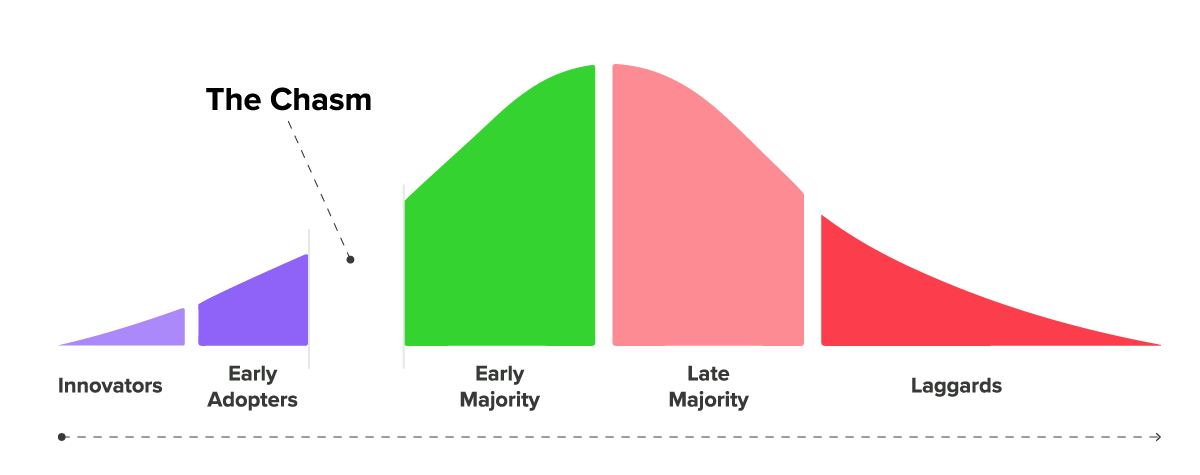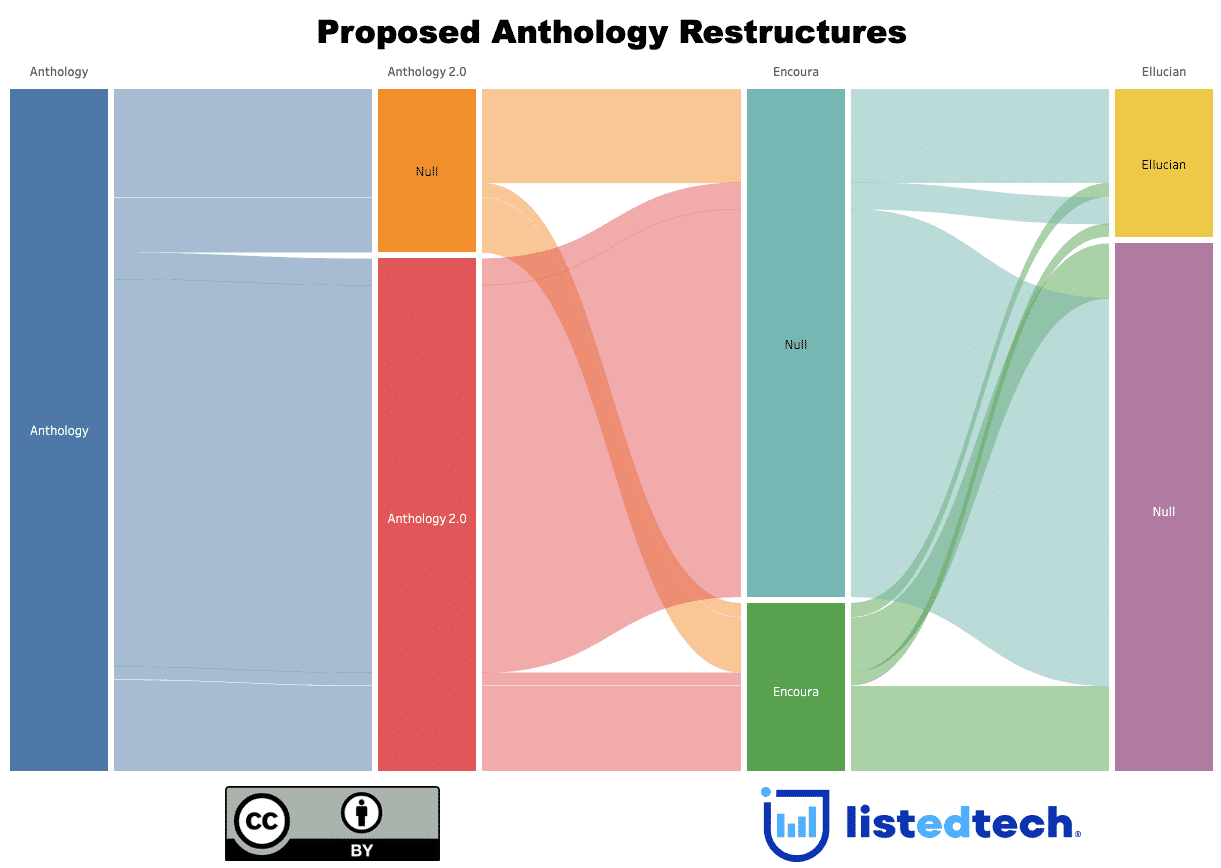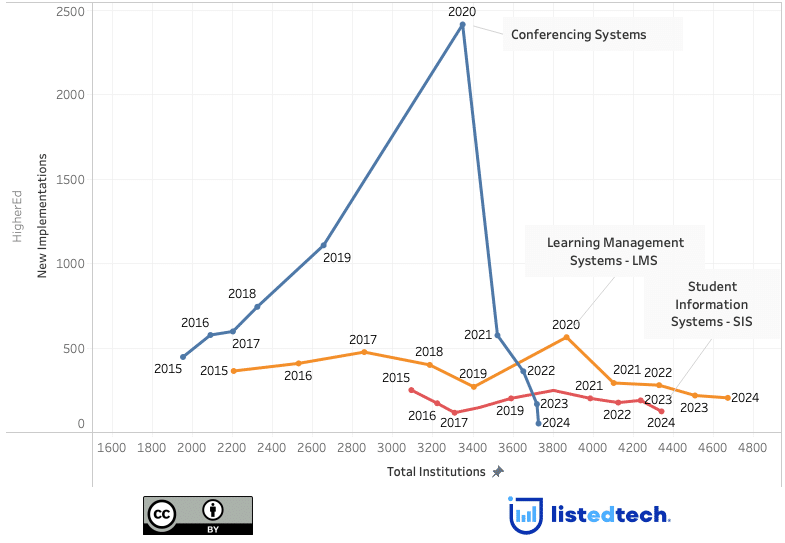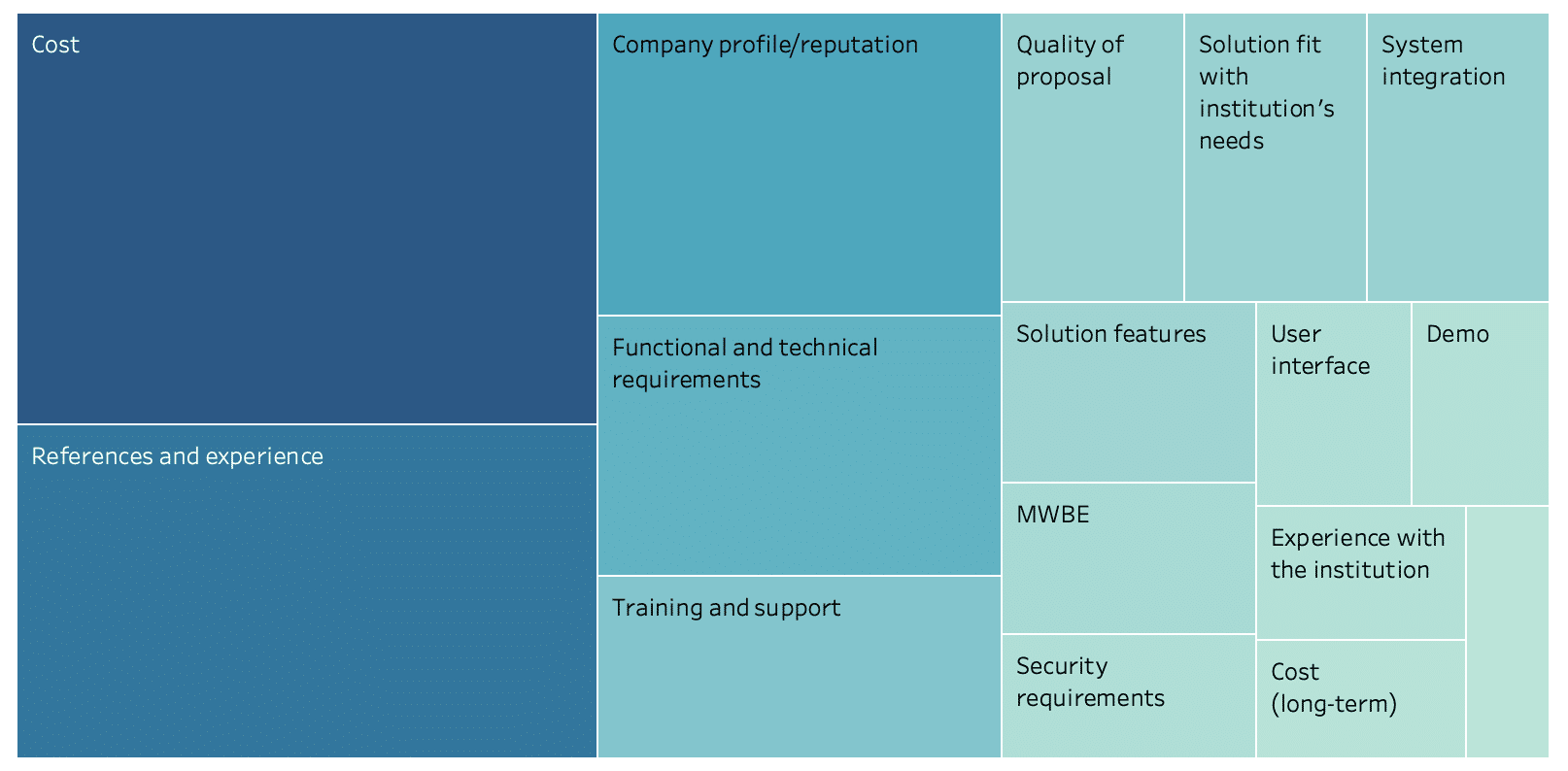
Writing a request for proposals to replace your current LMS is one of the most daunting tasks for non-procurement specialists. To help you accomplish this, you may decide to browse listserv archives or again, you may ask your colleagues in other universities what they included in this type of document. As an alternative, you could also log into our portal to find the most updated information on system implementations, among other information. Through our portal, you will find several detailed peer RFPs. Two important questions remain: How do you decide which criteria to include and how to score them?
In this post, we explore the selection of evaluation criteria and their weight in the evaluation process. We used the LMS subset of our RFP repository and compiled the information. Institutional portal subscribers can download RFPs* from 30+ product categories directly on the portal.

We chose to focus this article on the LMS product category because this is one of the product categories for which we have the most diverse RFPs. We selected 69 full-length RFPs from North American institutions: 13 from 2-year colleges, 20 from 4-year or above universities, 28 from school districts, and 8 from state-wide systems. When looking at the evaluation process section of each RFP, we noted more than 100 different criteria.
What You Might Want to Include in an RFP
Institutions can be innovative when it comes to choosing criteria. Among the extensive list of requirements, we saw a wide range of concepts that could support environmental policy (toxicity, recycling), procurement regulations (warranty, terms and conditions), or prospective endeavors (future growth, cost [long-term]).
The difference between functional and non functional requirements
Functional requirements are what the end user demands as basic functions from the system. All these functionalities need to necessarily be incorporated into the system as a part of the contract. On the other hand, non functional requirements (also called non-behavioral requirements) are the quality constraints that the system must satisfy according to the project contract. They deal with issues such as security, maintainability, reliability, scalability or performance.
Source: GeeksforGeeks.com
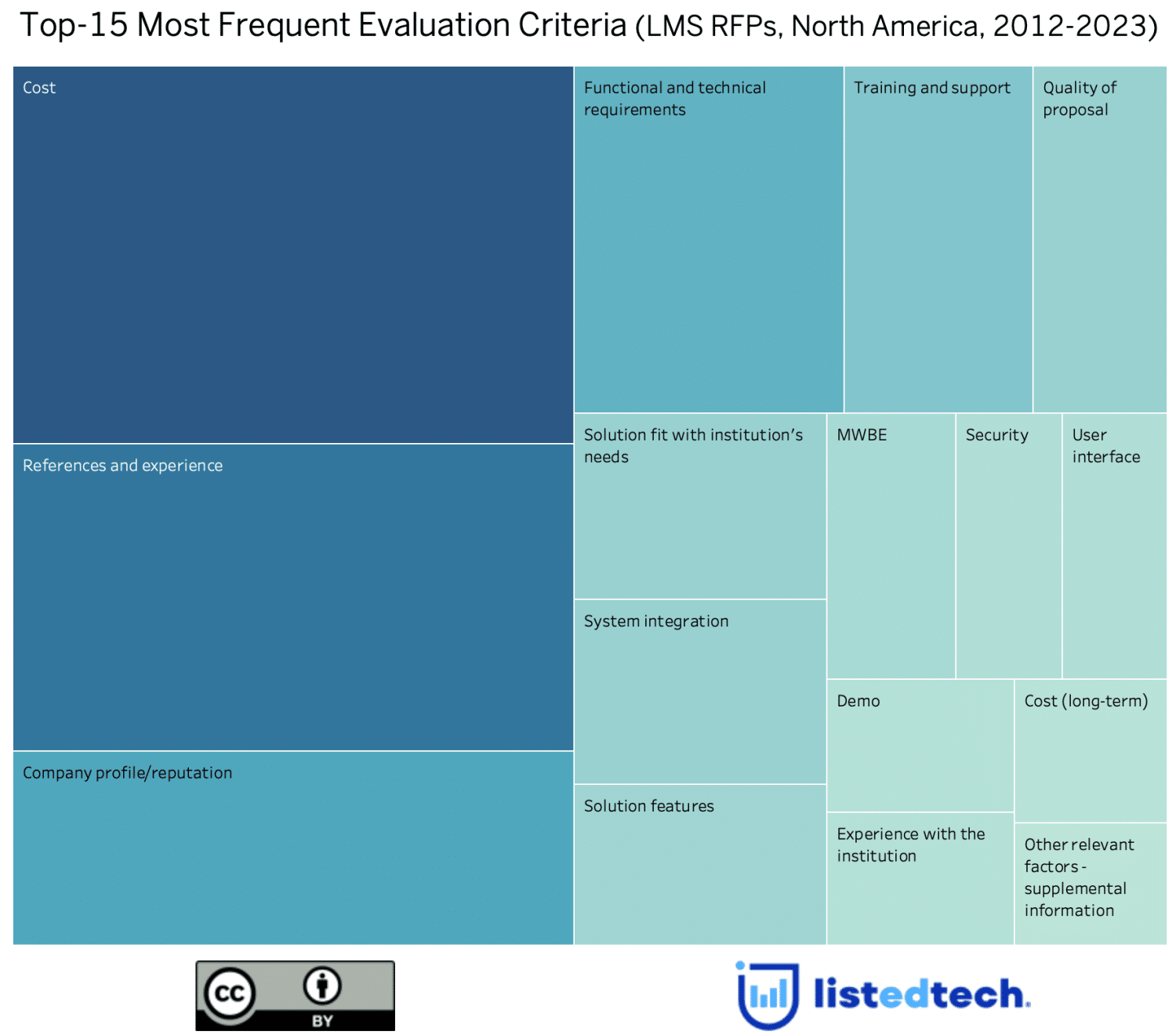
The Degree Type Makes (Almost) No Difference!
You may ask yourselves: are RFPs different when we look at them from a degree-type perspective? When we look at the top 5 criteria based on the degree type, we notice that not all institution types put the same importance on these criteria. For instance, even if cost represents about 25% of the selection process’s weight, it is not the most important criterion for 2-year colleges. For this group, the functional and technical requirements are key to winning the RFP with 38% of the total weight.
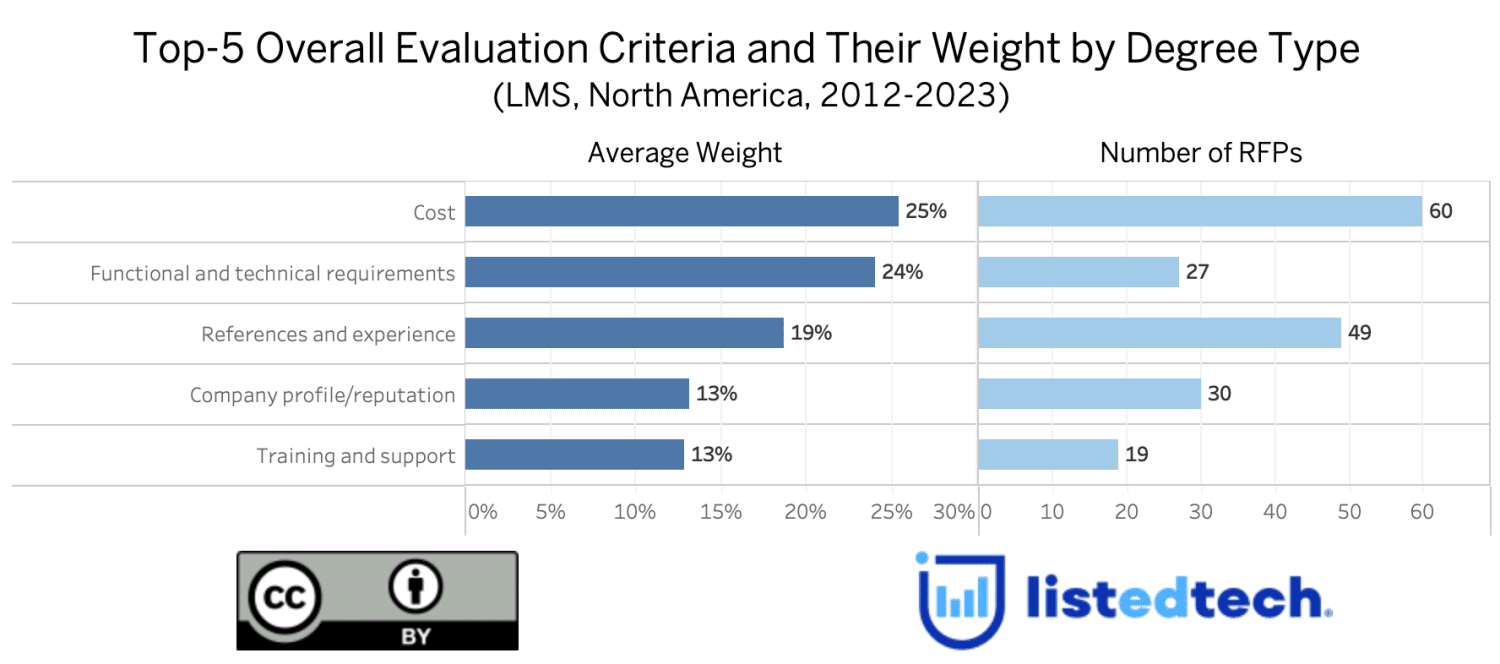
The references and experience criterion seems more critical for school districts than the other degree types, getting around 23% of the selection weight compared to less than 20% for the other groups. The company profile (which includes staff experience and portfolio) is fairly stable across the different institution types at around 13%. The same weight is given to training and support, an important component of many RFPs in the past few years.
We are preparing a second post on RFP evaluation criteria in which we will define the multiple non-functional and functional criteria at length. While we continue to research this important topic, we are also working on a new report on the whole RFP process, including selection criteria, for the LMS product category. The report will include a historical overview of the criteria to see which ones are currently considered necessary and which are on the downward trend. This report will be available to our portal subscribers in May and will be available to download at no additional charge**.
* There is a monthly limit of downloads.
** Within the annual limit of the subscription plan.
